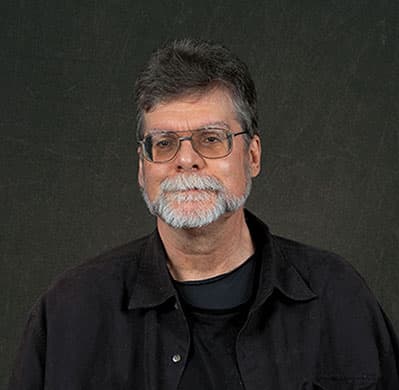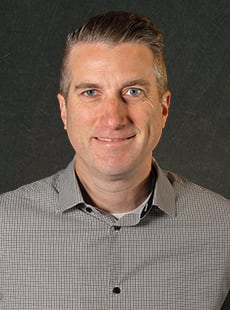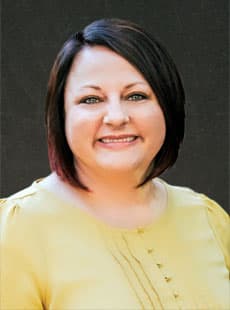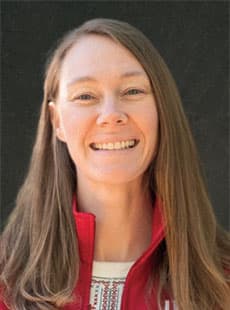Corey Kelts Retiring at the end of 2020
UETN’s longest-serving employee, Corey Kelts, will retire at the end of 2020 after 41 years at the University of Utah and 35 years with the Utah Education and Telehealth Network.
 Kelts was 23 in 1979 when he began working as an on-air operator at KUED (now PBS Utah). “I was actually the person that punches the buttons to put up the TV shows and I was paid the least of anybody,” Kelts said.
Kelts was 23 in 1979 when he began working as an on-air operator at KUED (now PBS Utah). “I was actually the person that punches the buttons to put up the TV shows and I was paid the least of anybody,” Kelts said.
At the time Kelts was going to school to become a radio talent. He got his FCC broadcast license by memorizing answers to the questions. "I remember walking into one of the tests and walking out about 10-15 minutes later and there are people who were in there for 8 hours, trying to complete those tests.”
After a year, Kelts was promoted to video-tape operator “in charge of recording everything.” Programs came to the station via satellite and had to be recorded onto tape so they could be scheduled to air. “I recorded a lot of tape ... and got the job of fixing words you can’t say on-air.” In 1986, Kelts moved to KULC, the forerunner of KUEN.
Kelts had envisioned a career as an athlete, “I played basketball, and found out I was wasn't going to get anywhere in football.”
In his current position, Kelts is a computer engineer and a specialist in supporting interactive video conference meetings. He’s essentially done the same thing for years. In the early years of IVC, online classes were produced much like a television program. “We actually had cameras on tripods that you had to have a person standing behind to shoot the instructor and the students,” said Kelts.
Eventually, UEN hired programmers to create conference management software – a task that can now be accomplished with off-the-shelf software. And that kicked off a challenge to keep up with an ever-changing technology environment. “Technology used to be, you get something new every, maybe three to five years. Then it was like, one or two years. Now we're going to new things that occur within 6 months.”
Jim Stewart, CTO for UETN praised Kelts, “Corey has seen many changes in his four decades with the University of Utah and has served our operations in many ways. We appreciate his steady hand and technical expertise.”
Kelts is proud of what IVC has done for education in Utah. “I think it's probably one of the best things that's happened in rural Utah. When we started being able to push classes out to some of these small, remote high schools it allows them to enter college to the point where they can actually know what they want to go into. Well, I don't know how true it is anymore, but they could actually graduate from high school with an associate’s degree.”
Kelts has a simple message to the person who takes his place: “This entire system is all about ‘Keep learning’.”
James Hodges, UETN Video Operations Tier 1 Manager remembers Kelts as someone who stayed updated with technology, “It's one of the things I’ve always admired about Corey is his grasp of technology in all aspects, whether it's computers, audio, music, whatever he’s always had a pretty good bead on the latest things.”
Kelts discussed strategies for success after he is gone. “Train ourselves and better ways to do, finding the best the best ways we can to deal with various situations.” Kelts continues “You learn something, then 2 years later, it's obsolete.”
Kelts described his biggest challenge of his tenure. “For the last while, it's just keeping track of everything.” He added thanks to “everybody that I've worked with over the years for their help and for being my colleagues.”
Hodges concluded, “I don't think we could have done what we've done over these years without Corey's perspective and insight and consistency, he's been there every step of the way. He’s been a fixture for all of us for so many years.”
Corey Kelts, Career Timeline Bookending 6 Decades:
1979:
After acing the FCC broadcast license test, Corey Kelts started work at the U of U in March of 1979 as an air operator for KUED Channel 7. Ron Graves was his first boss. This position was responsible for running the daily broadcast operations of the station.
1980:
During the summer of 1980, Kelts moved into the KUED videotape operator position. He was responsible for recording and editing PBS/KUED content to be aired on the channel. Some of the content that came from the BBC had to be edited for scenes and words that couldn’t be shown on the air in Utah.
1983:
The EDNET analog system for interactive video conferencing was established. This system would very soon change the landscape for instructional technology in Utah and for Kelts’ career.
1986-1988
In Dec. 1986, Kelts moved into a position as one of the first air and tape operators for the newly formed KULC, Channel 9, Utah’s Learning Channel when it transferred ownership from Weber State University to the Utah State Board of Regents. At the time KULC was broadcast from the old Gardner Music Hall in Presidents Circle on the U of U campus.
1988-1992:
Kelts moved into a technical position in what was called SETOC (State Educational Telecom Operations Center), which had been established in 1978 and in 1989 became the Utah Education Network.
Kelts would work with the innovative and visionary engineers Clark Rhodes, Dave Devey, Bob Giles, Sabrina Scott and others who were responsible for implementing the foundational technologies that would eventually facilitate the growth of the EDNET system and UEN as a whole.
Sabrina Scott who joined the organization in 1987 as part of SETOC remembers during this period of rapid expansion many long days and late nights on mountain tops around the state installing multi-million-dollar broadcast technology (Hybridized, Harris Switchers) at the translator stations to connect the far corners of the network from USU, and the Uintah Basin, to Wayne County, Bicknell, Moab and many points in between. And Kelts was always one of the guys back in the TOC that they would test and troubleshoot the signals with. She wonders how many late nights and early mornings Kelts had to spend sleeping behind the racks in the TOC to support the engineers at the mountain tops.
Jeff Egly who is now one of the associate directors of UETN Technical Services was, at the time, an up-and-coming EDNET field engineer and remembers this anecdote:
“Corey startled me one evening when I was wrapping up some late-night work at Bald Mesa. I had turned off the lights and was heading out the door when through the darkness via the order-wire at a fairly high volume Corey said, “I can’t see you but I know who you are!” I about jumped out of my skin! He may have been testing with another site or had seen the open-door alarm at Bald Mesa, I am not sure which.”
1990-1993:
It was about this time when the first live class from Utah State University was broadcast over the EDNET system to schools in the Uintah Basin. The setup for the class was basically a camera pointed at an instructor in front of a blackboard that was “broadcast” using cutting-edge technology (for the time) that had previously only been used by the military.
Kelts helped provide technical support for these classes and the rapidly changing statewide network, very much like he does to this day.
1993-1999:
As the EDNET system expanded and more sophisticated technology was developed over the next few years, more classes were added including a class that was “piped” across the U of U campus by fiber optics from Instructional Media Services (IMS), now knows as Teaching and Learning Technologies (TLT) from the old Milton Bennion Hall. Kelts used an Apple IIe to run this cutting-edge technology.
In 1993, UEN, KULC, EDNET and KUER moved into the new Eccles Broadcast Center.
In 1994, UtahLINK was established as the state’s data network and teacher training entity. Kelts was instrumental in the transition and growth working with a wide range of educational technologies as the state network grew and matured. Demand for this content was increasing with more and more live, interactive classes beginning to propagate across the EDNET system from universities such as Weber State, Utah Valley, Snow College, SUU and Dixie State
Jeff Egly recounts working with Kelts during this period of UEN’s growth: “I had the good fortune of working with Corey Kelts as part of field operations with most of this time during the period of UETN’s statewide microwave network and the implementation of MPEG 1 and 2 video codecs on the network, which at the time was ATM-based and combined two T1’s to each school. We also had the CVDS fiber backbone, which provided broadcast quality video. Corey was extremely knowledgeable when it came to broadcast audio and video, IP based solutions, and utilizing tools to troubleshoot and isolate issues. Corey could provide clues to the type and location of the problem which was key when traveling to communication sites. –Jeff Egly,
1999:
EDNET, KULC, and UtahLINK merged into the single UEN brand and reorganized to focus on content, technology and support growing over the next 20 years into what we now know as UETN.
And Kelts has been there all along the way. Through multiple generations and various iterations of video and network technologies, multiple building moves, remodels and expansions with his 41 years of service at the U of U and his more than 35 years of service for UETN, Kelts is the longest serving staff member of UETN.


 UTAH EDUCATION NETWORK
UTAH EDUCATION NETWORK

 Justin
Justin Braxton
Braxton Dani
Dani Kayla
Kayla Katie
Katie Lora
Lora Rob
Rob Val
Val
